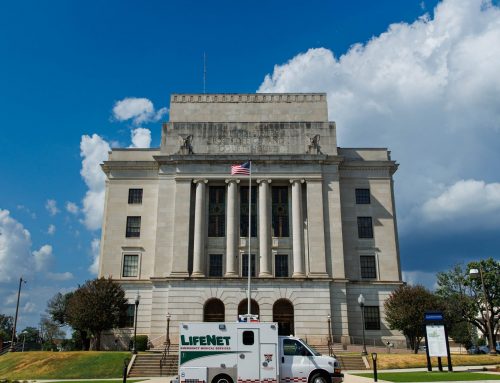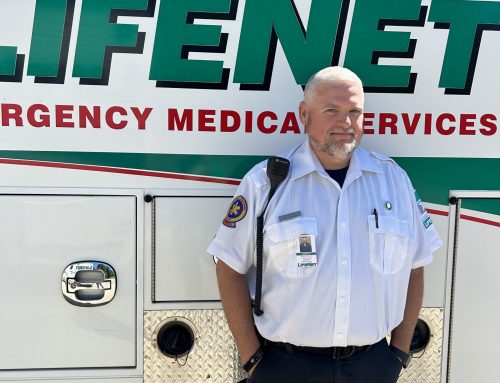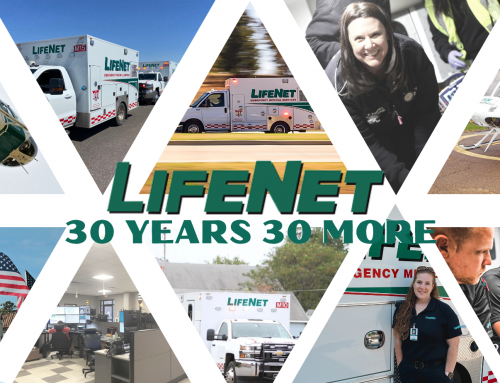LifeNet recently invested in four medical devices to help improve survival rates for patients who suffer a sudden cardiac arrest (SCA).
Called a LUCAS Chest Compression System, the machines are designed to provide consistent, high-quality mechanical chest compressions on patients needing CPR. Three of the devices have been placed on LifeNet ambulances covering Hot Springs Village, Arkansas, while the fourth device has been placed on the LifeNet Air 2 medical helicopter based at the Hot Springs Regional Airport.
“We made the decision to put the devices on each ambulance in Hot Springs Village because transport times to the nearest hospital from this part of our service area can take upwards of 30 minutes or longer. That is a long time to physically do quality chest compressions,” said Ronnie Weaver, Director of Operations for LifeNet in Hot Springs Village. “These devices help ensure the quality of chest compressions is not compromised due to crew fatigue during transport.”
The devices also play another important role for firefighters and paramedics in Hot Springs Village.
“Before purchasing these devices, our protocols stated we could not transport a cardiac arrest patient without a third person on board to rotate doing chest compressions. That third person was usually a firefighter from the Hot Springs Village Fire Department,” Weaver said. “This device allows us to transport that patient with only the paramedic on board, allowing the firefighters to remain in the Village when we transport the patient. The device also frees up the paramedic to start IVs, monitor cardiac symptoms, and deliver rescue breaths without having to rotate through doing the compressions.”
The devices are setup to perform chest compressions using American Heart Association standards. This means the device can either perform continuous chest compressions at the proper depth and speed, or it can be set to perform 30 chest compressions with a pause to allow the paramedic to administer two rescue breaths.
At just under $19,000 each, the devices were not a cheap investment for the ambulance service to make, especially considering insurance companies do not reimburse anything additional for utilizing the device on a patient during transport.
“You cannot put a price on a patient’s life, and this caliber of medical equipment allows us to provide a new level of care for cardiac arrest patients who need quality CPR over an extended period of time,” Weaver said. “The LUCAS device provides American Heart Association (AHA) chest compressions without creating delays to critical resuscitation tasks. Compressions keep the blood flow active, which extends the opportunity for a successful resuscitation.”
LifeNet made the decision to place the fourth device onboard the LifeNet Air 2 medical helicopter because of the critical nature of the patients transported.
“Due to space limitations inside a helicopter, it is almost impossible to do manual chest compressions if a critical patient goes into sudden cardiac arrest during transport,” said Weaver, who is also Director of Operations for the LifeNet Air 2 helicopter. “On both the ground and air ambulance, having this device available ensures compressions are not stopped during patient loading and unloading. In the air, it also ensures compressions can continue during takeoff or landing, when the flight crew is required to be wearing seatbelts.”






